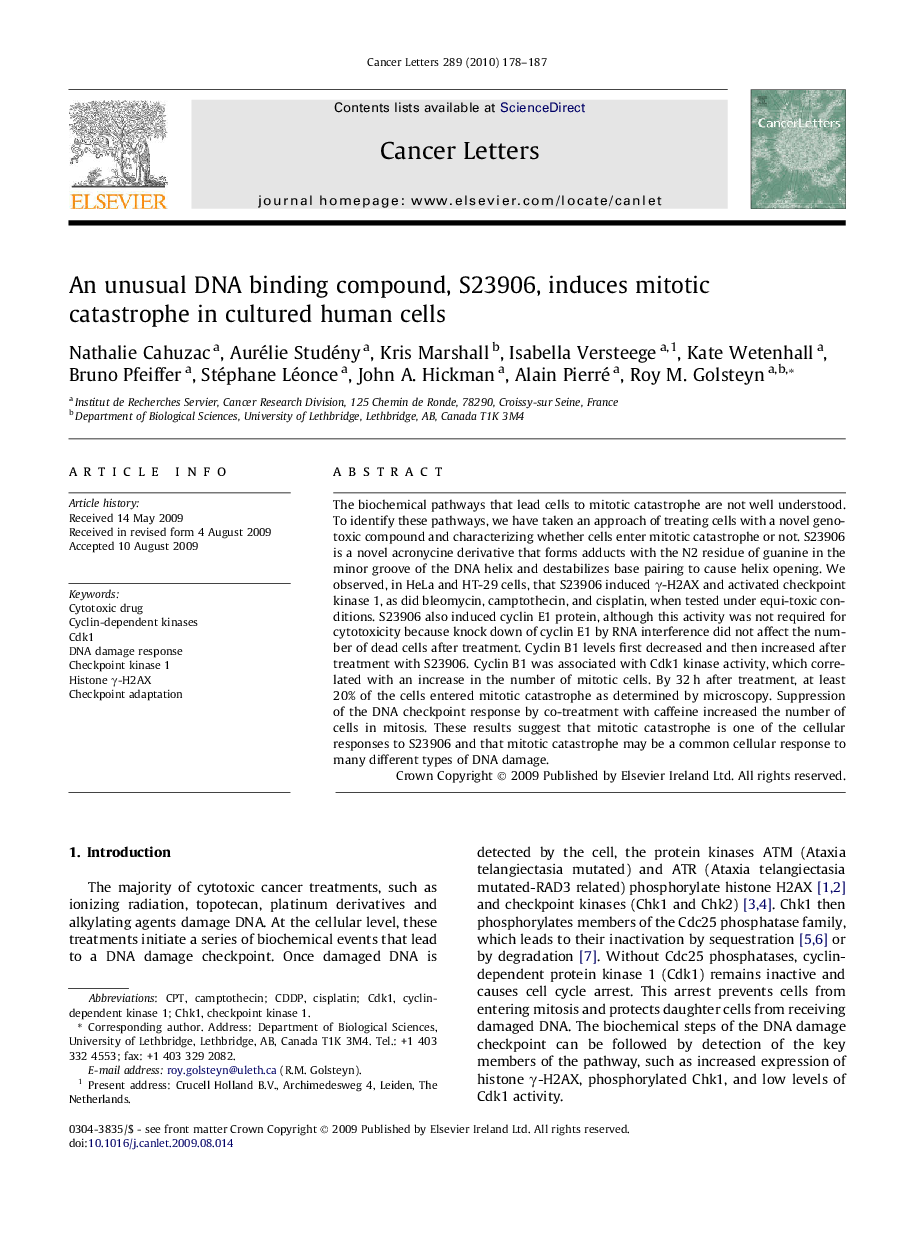| Article ID | Journal | Published Year | Pages | File Type |
|---|---|---|---|---|
| 2114266 | Cancer Letters | 2010 | 10 Pages |
The biochemical pathways that lead cells to mitotic catastrophe are not well understood. To identify these pathways, we have taken an approach of treating cells with a novel genotoxic compound and characterizing whether cells enter mitotic catastrophe or not. S23906 is a novel acronycine derivative that forms adducts with the N2 residue of guanine in the minor groove of the DNA helix and destabilizes base pairing to cause helix opening. We observed, in HeLa and HT-29 cells, that S23906 induced γ-H2AX and activated checkpoint kinase 1, as did bleomycin, camptothecin, and cisplatin, when tested under equi-toxic conditions. S23906 also induced cyclin E1 protein, although this activity was not required for cytotoxicity because knock down of cyclin E1 by RNA interference did not affect the number of dead cells after treatment. Cyclin B1 levels first decreased and then increased after treatment with S23906. Cyclin B1 was associated with Cdk1 kinase activity, which correlated with an increase in the number of mitotic cells. By 32 h after treatment, at least 20% of the cells entered mitotic catastrophe as determined by microscopy. Suppression of the DNA checkpoint response by co-treatment with caffeine increased the number of cells in mitosis. These results suggest that mitotic catastrophe is one of the cellular responses to S23906 and that mitotic catastrophe may be a common cellular response to many different types of DNA damage.
